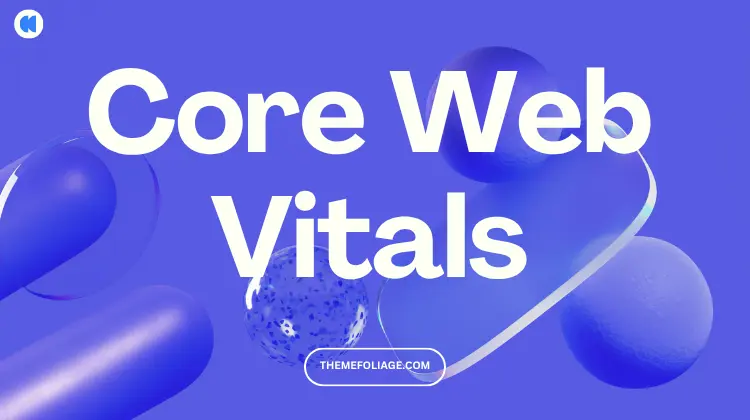In 2025, Google’s Core Web Vitals remain at the centre of technical SEO. These metrics directly measure how users experience your website, from loading speed to responsiveness and visual stability.
Understanding and optimising for these vitals isn’t just good for rankings; it’s essential for delivering a seamless user experience.
What are Core Web Vitals?
Core Web Vitals are a set of performance metrics that evaluate real-world user experience. Google introduced them to encourage developers to build faster, more stable websites.
- LCP (Largest Contentful Paint): Measures how quickly the main content of a page loads. Ideal LCP is under 2.5 seconds.
- INP (Interaction to Next Paint): Replaces FID (First Input Delay) in 2025, measuring how responsive a page feels after user interaction. Ideal INP is under 200 milliseconds.
- CLS (Cumulative Layout Shift): Evaluates visual stability. Ideal CLS score is less than 0.1.
What’s new in 2025?
Google has refined Core Web Vitals to better represent real user experiences. Here are the key updates:
- INP replaces FID: INP is now the definitive interactivity metric. It measures the full interaction sequence, not just the first delay.
- Field data prioritised over lab data: Real-user data (from Chrome User Experience Report) carries more ranking weight than lab simulations.
- Expanded thresholds: More nuanced scoring now rewards incremental improvements instead of only passing thresholds.
Why Core Web Vitals matter for SEO
Google has confirmed that page experience, measured by Core Web Vitals, is a ranking signal. Sites that perform better provide a smoother experience, reduce bounce rates, and improve conversion rates. A faster, more responsive site means happier users and better organic visibility.
1. Optimising for Largest Contentful Paint (LCP)
LCP measures the time it takes for the largest visual element on a page to load. It’s typically an image, video, or large text block.
- Use a Content Delivery Network (CDN) to reduce latency.
- Optimise and compress images using WebP or AVIF formats.
- Preload important resources like hero images or key fonts.
- Minify CSS and JavaScript to reduce render-blocking resources.
- Ensure server response times (TTFB) are under 200ms.
2. Optimising for Interaction to Next Paint (INP)
INP measures how responsive a page feels when users click, tap, or interact. Unlike FID, which only measured the first interaction, INP considers all interactions during a page session.
- Minimise long tasks in JavaScript that block the main thread.
- Defer non-critical scripts using async or defer attributes.
- Use code splitting to load only essential scripts for initial interaction.
- Adopt web workers for heavy computations.
- Monitor INP using PageSpeed Insights or Web Vitals Chrome Extension.
3. Optimising for Cumulative Layout Shift (CLS)
CLS measures visual stability, how much elements move as the page loads. Unexpected shifts frustrate users and cause accidental clicks.
- Always specify width and height for images and videos.
- Reserve space for ads, embeds, or dynamic content.
- Preload web fonts to prevent Flash of Unstyled Text (FOUT).
- Avoid inserting content above existing elements except in response to user interactions.
4. Mobile-first performance
With mobile-first indexing, Google evaluates your site primarily on mobile performance. Core Web Vitals are measured for mobile users first, so ensuring a fast and smooth mobile experience is critical.
- Use responsive design principles and scalable images.
- Reduce JavaScript bundles and minimise third-party requests.
- Use AMP or lightweight frameworks for content-heavy pages.
5. Server-side improvements
Backend optimisation has a significant impact on Core Web Vitals. Faster server responses improve all three vitals simultaneously.
- Implement server caching for dynamic pages.
- Use HTTP/3 for faster and more reliable connections.
- Enable compression (GZIP or Brotli).
- Upgrade hosting plans if response times exceed optimal thresholds.
6. Monitoring Core Web Vitals
Regular monitoring ensures your optimisations continue to perform. Google uses both field and lab data to assess performance over time.
- Google Search Console: View Core Web Vitals report under the “Experience” tab.
- PageSpeed Insights: Check real-user field data for every URL.
- Chrome DevTools: Measure lab performance during development.
- Web.dev/measure: Benchmark performance across devices.
7. The business impact of Core Web Vitals
Sites optimised for Core Web Vitals see significant business benefits:
- Improved organic rankings and visibility.
- Reduced bounce rates by up to 20%.
- Higher engagement and session duration.
- Increased conversion rates, studies show a one-second improvement can boost conversions by 15%.
8. Tools for Core Web Vitals optimisation
- Google Lighthouse – Lab analysis and improvement suggestions.
- WebPageTest – Detailed resource load analysis.
- GTmetrix – Performance scoring and waterfall breakdowns.
- Cloudflare / Fastly – CDN and edge optimisation solutions.
- PerfBeacon – Real-user monitoring for continuous tracking.
Conclusion
In 2025, Core Web Vitals define how Google measures your site’s user experience. Prioritising speed, responsiveness, and stability ensures higher rankings, better engagement, and happier visitors.
Remember, every millisecond counts. Optimise now, your users and your search visibility depend on it. Also check out – Measuring SEO ROI.



